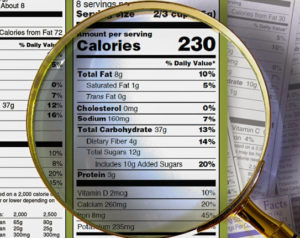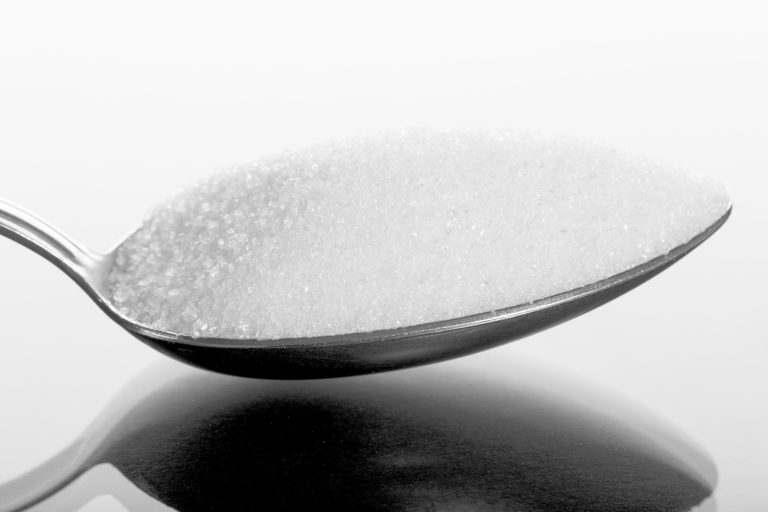
Vicki is a registered dietitian nutritionist, lifestyle nutrition expert, writer, culinary and media consultant and author of two books.
Sugar is a hot health topic these days. The average American eats almost 270 calories in added sugar every day — about 13% of total daily calories, according to data from the recent “What We Eat in America” National Health and Nutrition Examination Survey. The majority of that sugar comes from sugar-sweetened beverages, desserts and sweet snacks, sweetened coffee and tea, and candy.
The 2020–2025 Dietary Guidelines for Americans recommends limiting added sugar to less than 10% of total calories per day. For example, if you eat 2,000 calories a day, aim for no more than 200 calories or 50 grams per day of added sugars.
Older adults are pushing their added sugar limits. According to the guidelines, 54% of older males and 58% of older females are exceeding the 10% limit for added sugars.
Since older adults are at greater risk for chronic diseases, such as type 2 diabetes, heart disease, and certain cancers, as well as osteoporosis and sarcopenia, it’s extra important to focus on diet quality. Monitoring calories coming from sugar-sweetened soft drinks, premixed alcoholic cocktails, and desserts will help keep your waistline in check, too – another concern as metabolism slows down at this age.
“With age comes a decrease in the body’s ability to process sugar appropriately and efficiently,” says Emily Smith, MD, director of medical obesity at Jesse Brown VA Medical Center in Chicago. With the normal aging process, there’s a physiological cascade of events: a decrease in muscle mass coupled with an increase in body fat due to hormonal changes and less physical activity, which makes it harder for the body to utilize sugar. In addition, there can be an increased resistance to insulin — the hormone that lowers blood sugar — as well as impaired function of pancreatic cells called islets, which produce hormones that lower and raise blood sugar.
“With each decade of life, the liver releases more glucose into the bloodstream and other bodily tissues become less efficient at removing the sugar. This leads to increased levels of sugar circulating, which can cause damage to organs over time,” Smith says.
Try these five simple steps to cut back your sugar intake as you age.
1. Replace processed foods with produce
While people with type 2 diabetes or other conditions may have to strictly reduce their sugar intake, most people can start with a gradual approach. “Decreasing added sugar in your diet does not have to happen all at once,” Smith says. “I advise my patients to begin by replacing one to two packaged or processed meals or snacks daily with a piece of produce.”
Although fruits and vegetables contain natural sugar, they also contain fiber, which slows down the absorption of sugar in the blood. They also are full of plant compounds that are beneficial for health. For the calories, you get a lot of nutrient density in produce — contrary to processed foods, which are typically high in sugar and calories and low in nutritional value.
“Highly processed foods are often composed primarily of easily digested and densely packaged sugars that lead to acute spikes in blood glucose, placing more stress on the body’s production of insulin,” Smith says.
2. Limit sugary beverages
“Beverages are the leading source of added sugar in the diet,” says Melissa Sujak, RD, a registered dietitian and certified diabetes care and education specialist at Northwestern Memorial Hospital.
Drinking high sugar beverages — such as regular soda, lemonade, and sports and supplement drinks — adds up to a lot of extra empty calories. Plus, excessive added sugar in the diet can lead to disease risks, such as obesity, heart disease, and fatty liver.
“Swapping out sugary beverages can significantly slash the amount of added sugar in the diet,” Sujak says. “I recommend replacing sweetened beverages with water or enhancing water with a few slices of cucumber, mint, or fresh fruit.”
3. Control your portions of sweet treats
“Sugars in some form can be part of a healthy, well-rounded diet. However, frequent consumption of pure sugar, particularly in the form of fructose, can have health consequences over time,” Smith says.
Added sugar in the form of fructose causes fat to build up in the liver, which can lead to insulin resistance — a precursor to type 2 diabetes. The body has to work extra hard to keep blood glucose controlled, Smith says.
Control your portions of sweet treats with mini-sized cookies or brownies, or downsize gourmet coffee drinks. This way you won’t feel deprivation, and you’ll be safeguarding your health by reducing your sugar intake.
4. Do it yourself
There’s no doubt that sugar in all forms adds up quickly. Keep in mind, there are 4 grams of sugar in one teaspoon. The American Heart Association recommends limiting the daily dose of added sugar to no more than 6 teaspoons (about 25 grams) a day for women and 9 teaspoons (36 grams) a day for men.
It makes sense to sweeten foods yourself, instead of eating presweetened foods or drinks. By adding a drizzle of honey to plain yogurt, pure maple syrup into hot oatmeal, or frozen fruit into a smoothie, you can better control your daily sugar intake.
“I also recommend replacing added sugar with fruit, [switching to] no-sugar-added applesauce in recipes, and [using] sweet flavor enhancers like cinnamon, ginger, nutmeg, or pure vanilla extract,” Sujak says.
5. Sleuth out sugar on labels
Food labels can be confusing, as there are so many forms of added sugar. Look at the Nutrition Facts label and ingredient list to determine how much sugar is in a product.
Keep in mind, the total sugar on a label includes natural and added sugars. “I recommend reading labels to look for products with less than 5g of added sugar and to reduce portions to decrease the amount of added sugar in the diet,” Sujak says.
Scope out and limit added sugars such as beet sugar, agave nectar, maple syrup, honey, molasses, dextrose, sucrose, corn sweetener, juice concentrate, dehydrated cane juice — or anything with the words sugar, syrup, or ending in -ose. Keep in mind, these are all refined carbohydrates that add calories to the diet and prompt the pancreas to kick out insulin in order to get glucose into the cells for energy.
Manufacturers list ingredients in order of most to least in the product. If a form of sugar is at the top of the ingredient list, there’s a significant amount of sugar in the product.
The bottom line: It’s important for older adults to strive for a balanced diet with a moderate amount of sugar. The key is managing how much sugar you consume on a daily basis. Taking small, simple steps every day can help you tame your sweet tooth and appreciate sweet indulgences even more.
 Sugar Up Close on the Nutrition Facts Label
Sugar Up Close on the Nutrition Facts Label
- Scope out added sugar. Added sugar is not naturally occurring sugar, such as lactose in milk or fructose in fruit and vegetables — it’s added to products to sweeten them.
- Do the math. 4 grams = 1 teaspoon of sugar. For example, if one serving of a product has 16 grams of added sugar, that’s 4 teaspoons.
- Decrease sugar intake. Aim for less than about 6 teaspoons (25 grams) for women of sugar a day; 9 teaspoons (36 grams) for men.








